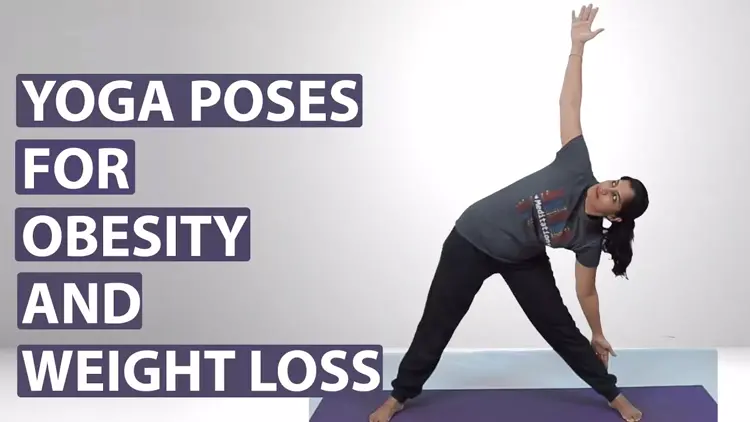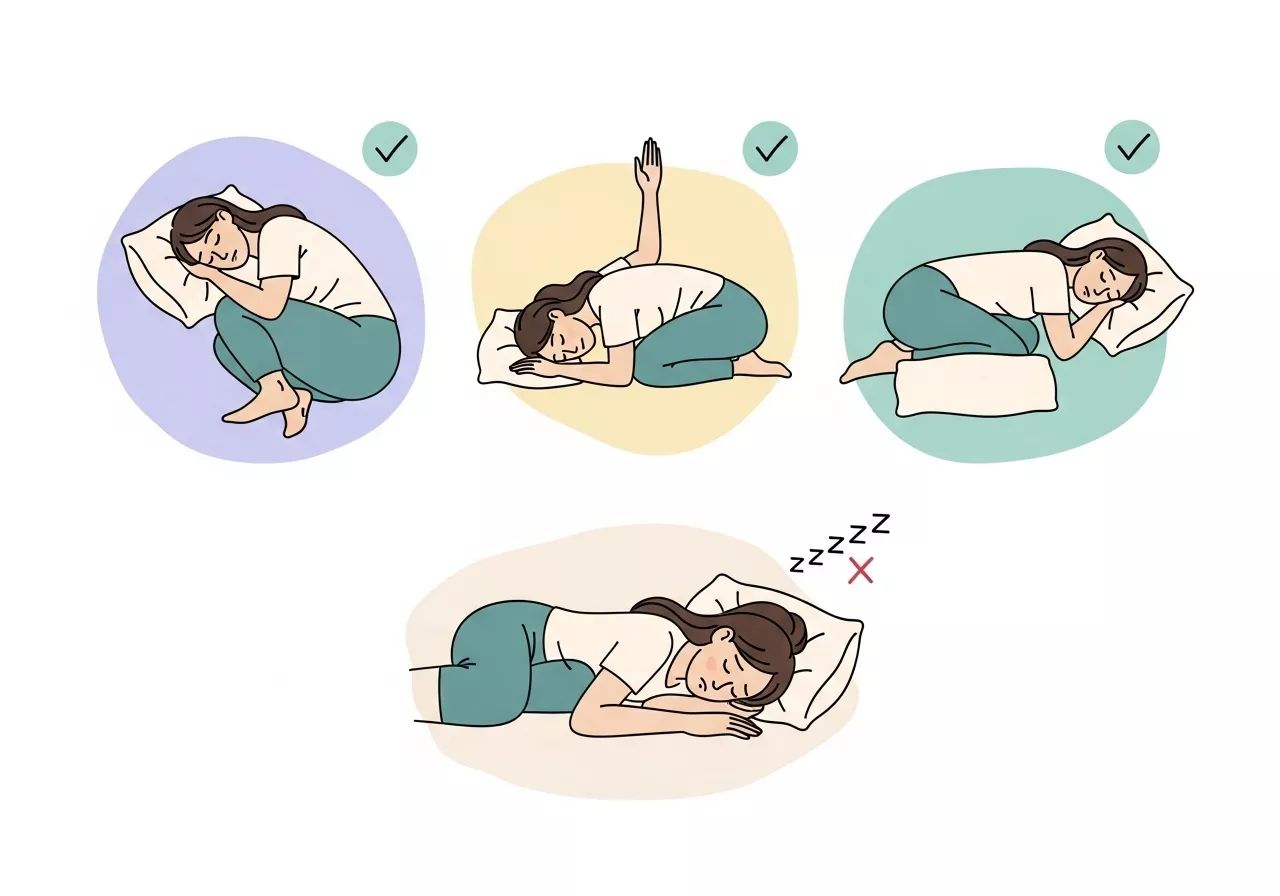Yoga is a transformative practice that accommodates all body types and fitness levels.
Whether you’re starting your journey to improve health, enhance flexibility, or transform your body shape, yoga offers accessible and powerful solutions.

Let’s dive deeper into how yoga can benefit overweight individuals and answer common questions surrounding its practice.
1. How to Start Yoga If You Are Overweight?
Starting yoga as an overweight individual can be a rewarding experience if approached the right way. Here’s a step-by-step guide to help you begin:
- Choose a Beginner-Friendly Style: Not all yoga styles are the same. Opt for gentler practices like Hatha Yoga, which emphasizes basic poses and breathing, or Yin Yoga, which involves holding poses for longer durations to improve flexibility and relaxation.
- Embrace Modifications and Props: Adjust poses to suit your body. Use props like yoga blocks, straps, or bolsters to make poses more accessible. For example, during forward folds, a block can help you avoid strain by bringing the ground closer.
- Wear Comfortable Clothing: Invest in breathable and stretchable yoga attire that allows you to move freely and comfortably.
- Start Small and Build Consistency: Begin with 10-15 minutes a day and gradually increase the duration as your confidence grows. Short, consistent practice is better than overexerting yourself.
- Seek Supportive Classes: Many studios and online platforms offer yoga specifically tailored to plus-size individuals. These classes foster a welcoming environment where you can practice without fear of judgment.

Starting yoga may feel challenging at first, but remember that every effort you make is a step toward better health.
2. Which Yoga Is Best for Body Development?
When it comes to body development, yoga offers a holistic approach that enhances physical strength, flexibility, endurance, and mental well-being.
Different styles of yoga contribute to body development in unique ways, so choosing the right one depends on your goals.
Let’s explore the best yoga styles for body development, along with their advantages and disadvantages.
1. Hatha Yoga
Hatha Yoga is a gentle style that focuses on foundational poses and breathing techniques, making it ideal for beginners.

Advantages:
- Improves posture and alignment, leading to better overall body balance.
- Builds core strength and flexibility gradually.
- Enhances relaxation and reduces stress, which aids muscle recovery.
- Suitable for people with limited flexibility or mobility.
Disadvantages:
- Progress in strength and endurance is slower compared to more dynamic styles.
- May not provide enough intensity for those seeking rapid body development.
2. Vinyasa Yoga
Vinyasa Yoga involves a continuous flow of poses synchronized with breath, offering a full-body workout.

Advantages:
- Builds muscular strength and cardiovascular endurance.
- Enhances flexibility through dynamic stretching.
- Burns calories, making it effective for weight management.
- Keeps the practice engaging and diverse with varied sequences.
Disadvantages:
- Requires some experience with yoga to keep up with the flow.
- High intensity can be challenging for beginners or those with physical limitations.
3. Ashtanga Yoga
Ashtanga Yoga is a structured and physically demanding practice involving a set sequence of poses.

Advantages:
- Develops significant strength, stamina, and discipline.
- Promotes flexibility and full-body engagement.
- Encourages mental focus and consistency due to its repetitive nature.
Disadvantages:
- Rigidity in sequence may feel monotonous to some practitioners.
- Requires a strong foundation in yoga as it’s physically demanding.
- Not ideal for people with injuries or those seeking a slower pace.
4. Power Yoga
Power Yoga is a modern, fitness-based style derived from Ashtanga, offering a high-intensity workout.
Advantages:
- Builds lean muscle and enhances overall strength.
- Promotes weight loss due to its calorie-burning nature.
- Improves cardiovascular health alongside flexibility and strength.
Disadvantages:
- Less emphasis on traditional mindfulness and relaxation aspects of yoga.
- Intense pace may increase the risk of injury if poses are not performed correctly.
5. Iyengar Yoga
Iyengar Yoga emphasizes precision and alignment, often using props like blocks and straps.
Advantages:
- Excellent for building strength and improving posture.
- Accessible for individuals with injuries or limited mobility.
- Focuses on holding poses, which strengthens muscles and increases endurance.
Disadvantages:
- Slow pace may not appeal to those seeking a more dynamic or cardiovascular workout.
- Requires patience, as progress can be gradual.
6. Bikram Yoga (Hot Yoga)
Bikram Yoga consists of 26 poses performed in a heated room, designed to detoxify the body and enhance flexibility.
Advantages:
- Promotes deep stretching due to the heat, which relaxes muscles.
- Encourages sweating, aiding in detoxification.
- Builds stamina and mental toughness.
Disadvantages:
- Risk of dehydration or overheating, especially for beginners.
- Not suitable for individuals with certain medical conditions like heart issues or heat sensitivity.
7. Restorative Yoga
Restorative Yoga focuses on deep relaxation and passive stretching, making it less about physical intensity and more about recovery.
Advantages:
- Facilitates muscle recovery and reduces stress.
- Improves flexibility through prolonged stretching.
- Ideal as a complementary practice to intense physical activities.
Disadvantages:
- Minimal calorie burn and strength building.
- May not provide the physical intensity needed for body development.
Which Style Should You Choose?
The best yoga for body development depends on your specific goals:
- For Strength and Endurance: Power Yoga, Ashtanga Yoga, or Vinyasa Yoga.
- For Flexibility and Alignment: Hatha Yoga or Iyengar Yoga.
- For Weight Management: Bikram Yoga or Power Yoga.
- For Recovery and Relaxation: Restorative Yoga or Hatha Yoga.
Yoga for body development is about finding a balance between your physical and mental goals.
While styles like Power Yoga and Ashtanga Yoga offer intense physical benefits, gentler practices like Iyengar Yoga and Hatha Yoga focus on building a strong foundation and improving posture.
To maximize benefits, consider combining different yoga styles. For example, practice Power Yoga for strength and Restorative Yoga for recovery.
Remember, consistency and mindfulness are key to achieving your body development goals through yoga.
3. Can Yoga Change Your Body Shape?
Yes, yoga has the potential to change your body shape, but it does so in a holistic and sustainable way.

Unlike intense workouts that focus solely on calorie burning, yoga emphasizes balance and gradual transformation:
- Muscle Toning: Yoga strengthens muscles through isometric holds and flows, resulting in a leaner, more sculpted appearance. Poses like Warrior II and Plank are especially effective.
- Posture Correction: Many people have poor posture due to sedentary lifestyles. Yoga realigns the body, reducing slouching and creating a taller, more confident stance.
- Fat Reduction: Dynamic yoga styles like Power Yoga or Hot Yoga increase calorie burn and promote fat loss, especially when practiced regularly.
- Mindfulness and Better Choices: Yoga cultivates awareness, helping you make healthier choices in terms of diet, sleep, and stress management—all of which contribute to body transformation.
Yoga’s changes may be gradual, but they are long-lasting and go beyond physical appearance, improving your overall health and confidence.
4. Is Yoga Good for Plus-Size Individuals?
Yoga is incredibly beneficial for plus-size individuals, as it promotes both physical and mental well-being. Here’s why it works:
- Increased Mobility: Yoga’s gentle stretches improve joint health and mobility, making everyday movements easier and more fluid.
- Stress Relief: Plus-size individuals may face societal pressures and stress. Yoga helps reduce cortisol levels, improving mental clarity and emotional balance.
- Body Positivity: Yoga encourages practitioners to accept and appreciate their bodies. Over time, this leads to increased self-esteem and a stronger sense of self-worth.
- Customized Practices: With the help of a skilled instructor, poses can be adapted to your body’s needs, ensuring safety and comfort during practice.
Yoga is not about fitting into a specific mold; it’s about discovering what works for your unique body and embracing the journey.
5. Can I Get Slim with Yoga?
Yoga can contribute to weight loss and overall slimming when combined with a healthy lifestyle. Here’s how yoga supports your weight loss goals:
Calorie Burning: Active yoga styles like Vinyasa and Power Yoga can burn calories effectively, especially when practiced regularly.
Targeted Fat Loss: Certain poses focus on strengthening and toning specific areas of the body. For instance:
Boat Pose (Navasana): Tones the abdominal region.
- Chair Pose (Utkatasana): Strengthens thighs and glutes.
- Twisting Poses: Detoxify the body and aid digestion.
Boosts Metabolism: Regular practice improves digestion and metabolism, aiding in natural fat loss.
Stress Management: Stress is a common cause of weight gain. Yoga reduces stress and emotional eating, helping you stay on track with your goals.
While yoga may not deliver rapid results like high-intensity workouts, it ensures sustainable and healthy weight loss.
6. Is Yoga Harder for Overweight People?
Yoga can present unique challenges for overweight individuals, but these challenges are not insurmountable:
- Flexibility Issues: Tight muscles or larger body parts may limit movement initially. However, regular practice improves flexibility over time.
- Strength Demands: Some poses require significant strength to support body weight. Start with beginner poses and gradually build strength.
- Emotional Barriers: Overweight individuals may feel judged or out of place in traditional yoga settings. Joining a supportive community or practicing at home can alleviate this concern.
- Solutions:
- Focus on restorative poses and gentle styles.
- Use props and modifications to ease into poses.
- Remember, every pose can be adapted to suit your body.
Yoga celebrates progress over perfection. The journey may feel challenging at first, but every step forward is worth it.
Yoga is a transformative practice that offers benefits for everyone, including overweight individuals.
Whether you’re aiming to get fit, enhance your body shape, or find inner peace, yoga provides a holistic approach to achieving your goals.
Start with a style that suits your body, embrace modifications, and stay consistent.
Over time, you’ll discover that yoga isn’t just about physical fitness—it’s a lifestyle that nurtures your body, mind, and soul.



